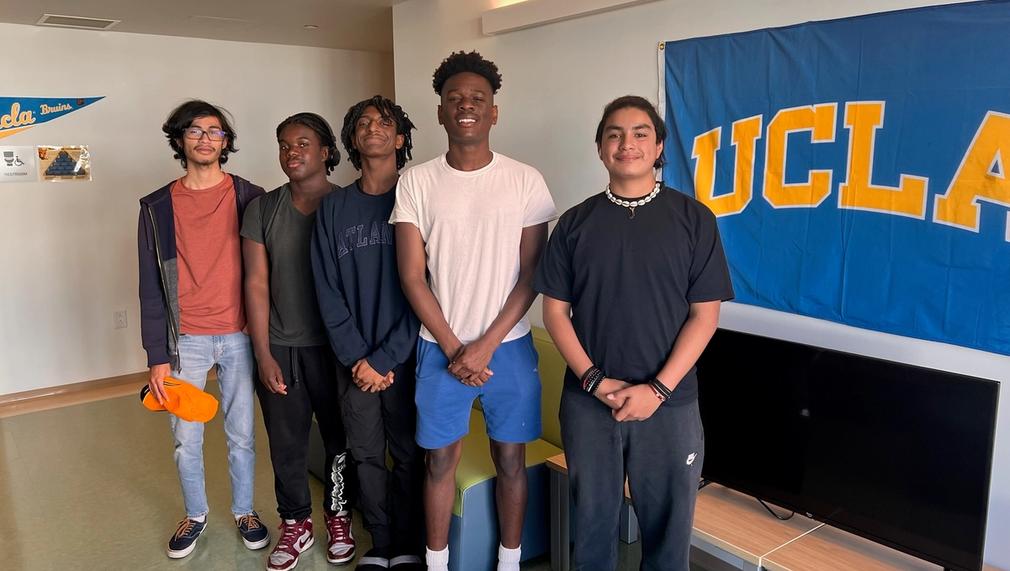Help Junior SEED Scholars Visit Colleges
SEED LA is a public, college-preparatory boarding STEM high school in South Los Angeles for youth who truly need a nurturing, safe environment to achieve academic success, and attain economic independence to live their best life. SEED LA will use LA2050 grant funds to afford each member of the Junior class an opportunity to visit two or three colleges/universities where they seek to apply for enrollment.

What is the primary issue area that your application will impact?
Support for foster and systems-impacted youth
In what stage of innovation is this project, program, or initiative?
Expand existing project, program, or initiative (expanding and continuing ongoing, successful work)
What is your understanding of the issue that you are seeking to address?
A SEED school addresses two key opportunities in LA. Resilient youth served by LA County need an educational model with enhanced services not currently available in traditional schools. Studies show only 50% of Transitional Age Youth graduate from High School and 1 in 5 experience homelessness within two years of aging out. Pursuing higher learning is more challenging for this community.
LA County provides welfare services for nearly 36,000 youth and supervises approximately 10,000 youth through the Probation Department. LA County has determined these youth could benefit from an enhanced academic model that includes educational enrichment and intensive social services to attain graduation and career. In South LA 7% of local high school students are performing at grade level in math and 25-30% are at grade level in language arts. 58% of young people in foster care graduate from high school and only 3% from college.
Describe the project, program, or initiative this grant will support to address the issue.
SEED LA seeks to break the cycle of intergenerational poverty by enrolling youth who can benefit most. As chartered by LACOE, SEED LA will have a weighted lottery, giving priority admission to foster youth, homeless/housing insecure youth, or have an immediate family member incarcerated. Students will come from families who qualify for free and reduced lunch program.
Every SEED graduate has a staff member dedicated to their post-secondary success through SEED’s College Transition & Success (CTS) program. Choosing a college is a major decision. With campus visits, students can add real-life context to their college research. SEED’s college advising centers around finding the right-fit college for each student. Our college matching tier system identifies major factors like affordability, high graduation rates, and good student supports and services, size, and location. With their lists in mind, Juniors begin visiting college campuses across the country. This is an invaluable step in the college selection process because it gives students context for their criteria and provides them with a direct experience of campus life.
Describe how Los Angeles County will be different if your work is successful.
The impact of SEED LA to LA County is tangible. LA County spends $233,000 per youth annually for juvenile camps, SEED LA will cost $40,000 per student for housing and an excellent education. SEED LA’s ambitious goal is that 75% of its students graduate a four-year college within six years. SEED LA will provide a solid pathway to financial independence. The impact on the individual, family, and community sustains a lifetime. Serving 400 students, 50% of the students come from the Vermont Manchester neighborhood and 50% of students from throughout LA County. SEED schools are intentionally located in the communities where its families live. Existing SEED schools are beloved community assets for all to utilize and SEED LA’s beautiful new campus is already hosting various community organizations.
What evidence do you have that this project, program, or initiative is or will be successful, and how will you define and measure success?
SEED programming works. The key metric is graduate rates from four-year colleges. 90% of SEED 9th graders graduate from high school. 94% of SEED graduates enroll in college. Students who attend “green” or “yellow” colleges, colleges that support first generation minority students, are graduating college at much higher rates (64%) than the national average (11%). 80% of SEED graduates are first-generation college students.
There are very specific academic growth targets set forth in SEEDs charter. The first tool is Network Success Measures (NSM) and the second is School Improvement Plans (SIP). NSMs set benchmarks for success to establish accountability and set goals by capturing student and organizational performance in Math and ELA, Attendance, Student retention, Staff retention and College Application Rates. SIPs focus on priority work and align to SEED Network initiatives. These tools are guided by the schools Root Cause Analysis, school year vision, and are grounded in data.
Approximately how many people will be impacted by this project, program, or initiative?
Direct Impact: 76.0
Indirect Impact: 526.0